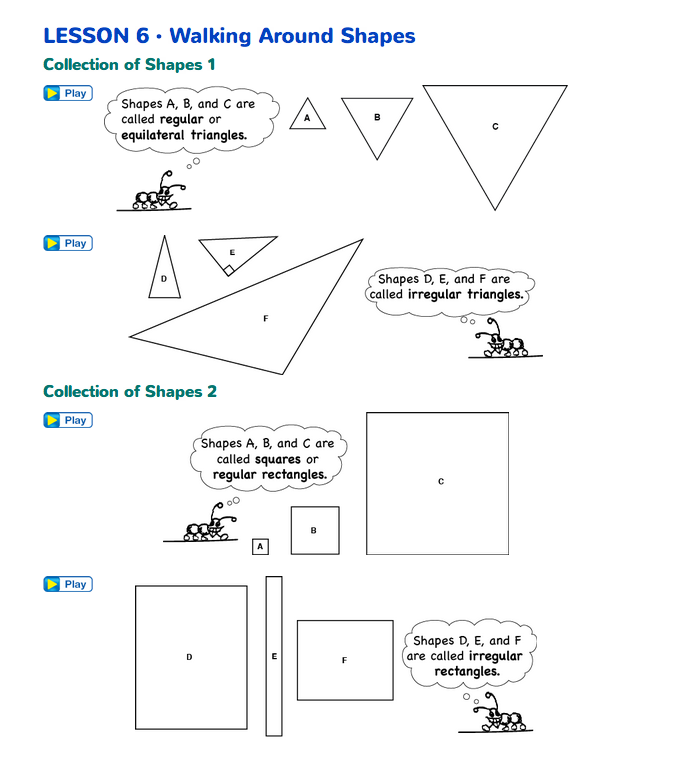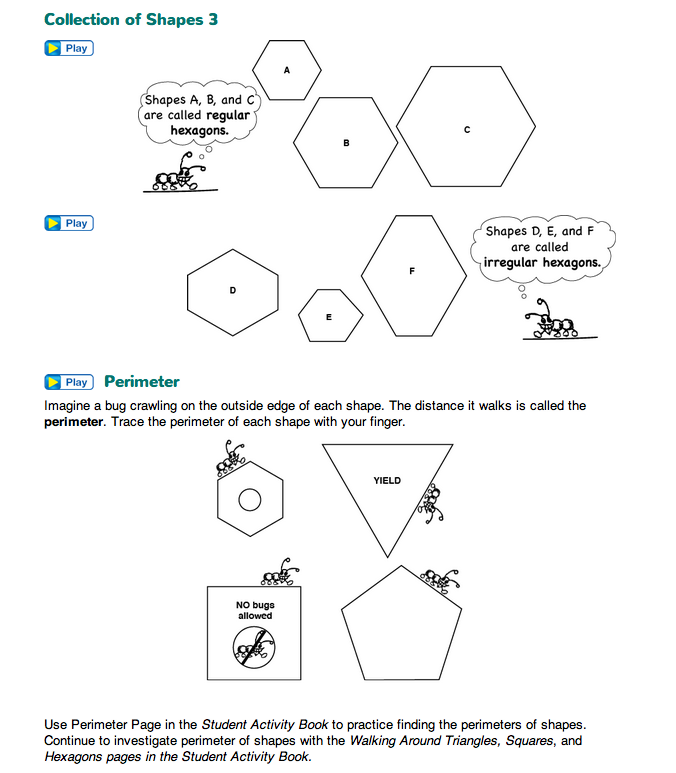Compare Triangles. Direct students' attention to the Collection of Shapes 1 section of the Walking Around Shapes pages in the Student Guide. Display the triangles on the Collection of Shapes 1 Master.
- What are these shapes called? (triangles)
- If you were to name triangles like A, B, and C, what would you call these special triangles? (Students might come up with a variety of names like same-side-length triangles or equal triangles.)
- Mathematicians call triangles like A, B, and C regular triangles or equilateral triangles. Do you think these are good names for these triangles? Why or why not? (Possible response: These are good names because all the sides are the same or equal in length.)
- What is the same about shapes A, B, and C? (The three sides of each triangle are the same length.)
- Is that true for shapes D, E, and F? (No, D has two sides the same length, but none of them are like A, B, and C.)
- Mathematicians call triangles like D, E, and F irregular triangles. Do you think this is a good name for these triangles? Why or why not? (Possible response: They are good names because these triangles do not have 3 regular side lengths like Triangles A, B, and C.)
Compare Rectangles. Direct students' attention to the Collection of Shapes 2 section of the Walking Around Shapes pages in the Student Guide and display the rectangles on the Collection of Shapes 2 Master.
- What are all the shapes on this page called? (rectangles)
- What is the same about shapes A, B and C? (Possible response: They have 4 equal sides. They are all squares.)
- How do you know they are squares? What makes them squares? (All their sides are the same length.)
- What about their corners (angles)? (They are all the same, too. They are all 90 degrees.)
- Is that true for shapes D, E, and F? (No. Rectangles D, E, and F have two sides that are the same but not all four, although their corners are all the same.)
- If we were to name rectangles like A, B, and C, what would you call these special rectangles? (Students might come up with a variety of names such as: same-side-length rectangles or squares.)
Tell students that mathematicians call these special rectangles squares. They are also called regular rectangles.
- If you were to name rectangles like D, E, and F, what would you call this group of rectangles? (Some students might call these just rectangles. To name these rectangles as a group, use irregular rectangles.)
A regular polygon is a polygon in which all sides have the same length and all angles have the same measure. When discussing the regular triangles (equilateral triangles), regular rectangles (squares), and regular hexagons, you candiscuss the size of the angles as well as the lengths of the sides.
Compare Hexagons. Direct students' attention to the Collection of Shapes 3 section of the Walking Around Shapes pages in the Student Guide and display the hexagons on the Collection of Shapes 3 Master. Repeat a similar discussion using the shapes in this collection. These shapes are regular hexagons and irregular hexagons.














